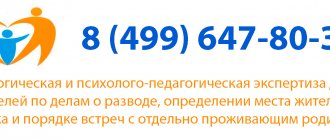From the moment of birth, the child is dependent on others: he is so small that at first he cannot even roll over without outside help. It will take a lot of time for the baby to grow up, begin to walk, learn to speak, receive upbringing and education, and finally become a capable citizen with all the rights of an adult.
But despite the helplessness and lack of experience, any child is, first of all, a person. As soon as he is born, he immediately has certain rights and freedoms, which are regulated by legislative acts and documents.
In addition to the documents regulating the rights of minors in every civilized country, many countries have ratified international documents on the rights of the child. These documents have the highest priority, moreover, their ratification imposes certain obligations on the participating countries to protect and implement improvements in this area.
What international document establishes the fundamental rights of the child?
At the moment, there are three main international documents, all of them adopted by the United Nations:
- Declaration of the Rights of the Child;
- Convention on the Rights of the Child;
- World Declaration on the Survival, Protection and Development of Children.
The main document defining and enshrining the fundamental rights of the child is the Convention.
It is in it that a minor first appears as a subject of law, an independent person endowed with all human rights and freedoms.
The provisions defined in 54 articles of the Convention apply to all children without exception (according to the Convention, a child is a person under the age of eighteen).
International documents - Universal Declaration of Human Rights
The world community has developed a whole range of international documents on human rights . Suffice it to say that during its existence, the United Nations has adopted more than 70 international documents in the field of human rights: declarations, conventions, recommendations, covenants, etc. States parties to international human rights treaties have undertaken obligations to respect the human rights and freedoms set out in them. This means that the corresponding rights and freedoms are not only of a domestic nature, but acquire a new additional quality: they become international human rights - the highest level of legal regulation. As a rule, international instruments provide for the creation of a control mechanism to monitor the implementation by the state of its obligations; obligations. While noting the importance of international legal recognition of human rights, it should at the same time be borne in mind that effective protection and protection of these rights becomes possible only after state recognition of these rights and their legal enshrinement in national legislation. In other words, international human rights documents do not act independently, but through “internal” national law; they must be embodied in the corresponding laws within the country.
A characteristic feature of the regulation of human and civil rights and freedoms in modern Russia is their compliance with international human rights acts. We can note three levels of laws regulating the rights and freedoms of man and citizen. Firstly, international acts on human rights and freedoms . In Russia, rights and freedoms are recognized and guaranteed in accordance with generally accepted principles and norms of international law and international treaties of the Russian Federation. They are an integral part of the Russian legal system. Secondly, the Constitution of the Russian Federation contains the most important provisions of the fundamental international documents on human rights. Thirdly, laws that, in accordance with international acts and the Constitution, regulate certain rights and freedoms of man and citizen. Moreover, if an international treaty of the Russian Federation establishes rules other than those provided for by domestic law, then the rules of the international treaty apply.
Activity in the development and adoption of documents of this kind has been constant for a long time, because from a democratic point of view, gross violations of human rights and freedoms are completely intolerable. However, these ideas were difficult to implement. And only the 20th century accelerated this process. Among the numerous modern international documents on human rights, the Universal Declaration of Human Rights, the International Covenant on Civil and Political Rights, the International Covenant on Economic, Social and Cultural Rights, and the Convention on the Rights of the Child should be mentioned. They form the basis of knowledge about human rights.
A special place among documents in the field of human rights belongs to the Universal Declaration of Human Rights . It was adopted by the United Nations (UN) General Assembly on December 10, 1948. This happened shortly after the defeat of fascism in the Second World War. It became an important legal result of the victory of the ideas of freedom and democracy over fascist barbarism. The Declaration reflects the experience of the struggle for social rights in the 20th century. Its purpose is to serve “as a task to which all peoples and all states should strive.” It is noted that the recognition of natural, equal and inalienable human rights is the basis not only for the freedom of each individual person and respect for his dignity, but also a condition for maintaining universal peace and fair relations between peoples. Neglect and contempt for human rights led at one time, in particular in the Second World War, to barbaric acts that, as stated in the Declaration, outrage the conscience of mankind.
for the adoption of the Universal Declaration of Human Rights . In recognition of the world-historical role of this document, December 10 is now celebrated in all civilized countries of the world as International Human Rights Day.
And it is impossible to perceive as anything other than a tragedy the fact that the USSR delegation (together with the delegations of the Byelorussian SSR, Czechoslovakia, Poland, Saudi Arabia, the Ukrainian SSR, the Union of South Africa, and Yugoslavia) abstained from voting for the Declaration. Our country, which made the greatest contribution to the victory and suffered the greatest losses, did not sign this Declaration until 1989. Moreover, the Declaration itself was not published in the popular press until 1989. Why did it happen? Many articles of the Declaration were unacceptable to the political authorities that reigned in the country.
The Universal Declaration of Human Rights became the first set of universal human norms and values; it placed human rights on a moral basis, emphasizing such qualities of people as dignity and conscience. For the first time in the history of mankind, a declaration was adopted that applies to all people on our planet, regardless of nationality, race, gender, religion, and also the country in which they live. The rights and freedoms proclaimed by the Declaration belong to every inhabitant of planet Earth.
The Declaration consists of a preamble and 30 articles. Despite the laconic nature of the document, it enshrines human rights in all major spheres of human life. These are personal (civil) rights and freedoms, political, as well as economic, social and cultural human rights.
In the modern era, the legal status of a person in society is considered to correspond to world standards of democracy if it is based on three natural principles: the right to life, freedom and personal integrity, and equality. This combination of these three rights is not accidental: freedom is the highest value of human life, and personal integrity is the first prerequisite for freedom.
Articles 22 - 25 enshrine the basic socio-economic rights of a person, without which his dignity cannot be ensured.
The Universal Declaration of Human Rights in Article 29 mentions that in addition to rights there are responsibilities: “every person has responsibilities to society, in which alone the free and full development of his personality is possible.” The unity of rights and responsibilities is the basis of citizenship.
In November 1991, our country adopted the Declaration of Rights and Freedoms of Man and Citizen. It reproduced the Universal Declaration of Human Rights in national legislation, with some clarifications and additions.
The ideas and principles contained in the Universal Declaration have been further developed in numerous international legal instruments on human rights.
Among the most important are two covenants that were adopted by the UN General Assembly on December 19, 1966: the Covenant on Civil and Political Rights and the Covenant on Economic, Social and Cultural Rights. These covenants are collectively called “Human Rights Covenants”.
There are many other acts adopted by the UN in order to protect the rights and freedoms of certain groups of the population (women, children, disabled people, refugees, etc.). Among them, the Declaration of the Rights of the Child (1959) and the Convention on the Rights of the Child (1989), adopted by the UN General Assembly, occupy an important place. We will talk about the last two documents in detail in paragraph 17.
The significance of the norms of international law in the field of human rights is that, on the one hand, they oblige states to actually ensure human rights enshrined in international legal acts; on the other hand, these documents provide a specific person with the right to demand that the state fulfill its international obligations. Thus, international legal recognition of human rights most directly affects the nature of the relationship between society and the individual, and the process of ensuring human rights in each specific state.
In the modern world, the observance and specific content of individual rights is the most important indicator of the domestic and foreign policy of the state, its human dimension. Through respect for human rights, individual values are affirmed in individual states and in the world as a whole.
List of international legal documents defining children's rights
Declaration of 1924 and 1959
In fact, the very first document was the Geneva Declaration of the Rights of the Child, adopted in November 1924. The main message of the document is “a child is not a commodity.” This was the first attempt at the international level to protect minors, improve their situation, and combat child labor and slavery.
The Declaration contained five principles:
- a minor must have opportunities and means for his physical and spiritual development;
- to feed a hungry child, to help a sick child, to shelter an orphan, to correct a mistaken child;
- in difficult times, first aid for children;
- it must be protected from any form of exploitation;
- kids need to be raised with the idea that they should benefit other people.
In 1959, the UN General Assembly adopted a new Declaration, in which everyone who in one way or another has some influence on the lives of minors - governments, local authorities, parents, public organizations - is called upon to recognize the freedoms of young citizens and respect them.
The Declaration especially emphasizes that rights and freedoms apply to all children without exception, regardless of gender and race, religion and health status, social and financial status of the family.
Ten basic principles declare the rights of minors to:
- name and nationality;
- love, care and understanding of parents and other family members;
- material security and social protection;
- education and health care;
- education and development;
- protection from any form of exploitation, cruelty and humiliation.
1989 UN Convention
The 1989 Convention deepens and expands the list of provisions defined in the Declaration. Here, much attention is paid not only to basic human rights (to life and material support), but also to the social and moral aspects of education and development, and special care for children who find themselves in difficult life situations.
The Convention ensures the rights of the child in several ways:
- basic - the inalienable right to life, to a name and citizenship, the right to know your parents and live in a family, surrounded by care and love, to housing, food and clean water, to medical care, to protection from violence;
- social – to receive an education, to decent physical, intellectual, spiritual development, to freedom of conscience and religion, the right to have one’s opinion and express it freely, to privacy;
- in difficult situations, children left without parental care, orphans or refugees have the right to special assistance and support from the state; children with disabilities or with a special level of mental or physical development should be integrated into society as much as possible; they have the right to additional social benefits.
Expert opinion
Maria Lokshina
Family law expert since 2010
The Convention insists that parents or persons in their stead have the responsibility to raise children to respect other people, their freedoms and culture. Young citizens must be prepared to live in a society with a spirit of equality, tolerance and acceptance.
UN Standard Minimum Rules for the Administration of Juvenile Justice
Until the age of eighteen, a person is considered a minor, not yet fully formed morally and mentally, therefore, if he commits an offense, a reduced punishment is applied to him, aimed, rather, at correcting behavior rather than at punitive measures.
In 1985, the UN adopted the so-called Beijing Rules - recommendations to member countries, which define the concepts of juvenile delinquency, the goals of justice in relation to them, the age of criminal responsibility of minors, possible sanctions, as well as the principles of adjudication and the choice of sanctions.
Based on these rules, the legislation of the participating countries has adopted special criminal legal regimes for minors.
World Declaration on the Survival, Protection and Development of Children
In September 1990, in New York, at a special meeting dedicated to the interests of minors, issues such as children's vulnerability and constant exposure to danger were raised.
These are wars and famines, racial discrimination and poverty, malnutrition and disease, adult cruelty or negligence.
Since, by uniting, countries can implement programs that provide young citizens with the basic needs of survival, at this meeting a corresponding Declaration was adopted, obliging participants to take measures to restore economic growth, reduce hunger, spread education, strengthen medical care, and care about the environment.
The main task was the complete ratification and implementation of the provisions of the Convention in all countries without exception.










